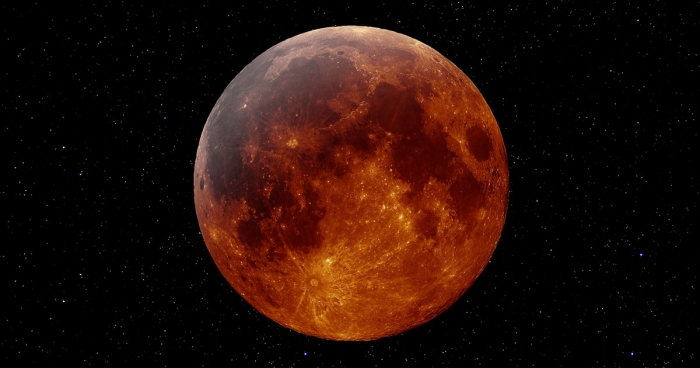Those who looked up to the sky in the early hours of Jan. 31 were lucky enough to experience a rare trinity of lunar phenomena—the convergence of a “supermoon,” a “blue moon,” and a “blood moon.” The appearance of the ominous sounding “Super Blue Blood Moon” sparked world-wide conversation on its significance and origin.
The term “blue moon” refers to the appearance of a second full moon in a single calendar month. But what is a full moon exactly? Full moons occur when the Earth is located directly between the Sun and the Moon. Since full moons take place every 29.5 days on average, seeing two in one calendar month only happens, well, once in a blue moon. More specifically, they occur once every 2.716 years—about 3 per cent of all full moons.
According to NASA, when a full moon coincides with its perigee—the point at which the Moon is closest to the Earth in its elliptic orbit—it’s called a “supermoon.” This makes the Moon appear slightly larger and brighter than it does on an average night. However, “Supermoon” isn’t an official term and the criteria for how close the full moon must be to its perigee isn’t well defined. As a result, “supermoons” are actually quite frequent, comprising 25 per cent of all full moons.
The most spectacular feature of the trifecta is its glowing red hue. This odd colouring lends the “blood moon” its nickname. “Blood moons” are lunar eclipses, which occur when a full moon intersects with the Earth’s orbital plane at points called “nodes.” The Earth’s shadow then covers the Moon, blocking all direct light from the Sun. Kelly Lepo, coordinator of the McGill Space Institute, described how this phenomenon gives “blood moons” their red tinge.
“The moon looks red because of the Earth’s atmosphere,” Lepo said. “While the Earth blocks the sunlight that normally hits the Moon, some light passes through the Earth’s atmosphere. The [particles in the] atmosphere scatter blue light [which has shorter wavelengths] and red light passes through, just like what happens during a sunset. In fact, if you were standing on the Moon during a lunar eclipse, you would see all of the sunsets and all of the sunrises on the Earth simultaneously. The Earth would have a red ring around it.”
Conditions on the Earth’s atmosphere during an eclipse can actually alter the shade of red that the Moon takes on. The amount of dust particles, water droplets, or clouds in the atmosphere can all affect how much light is scattered. According to National Geographic, even active volcanoes spewing ash into the atmosphere can trigger deep, blood-red eclipses.
Lepo says that lunar eclipses held special significance in ancient civilizations, as omens that foretold the death of a king.
“Lunar eclipses were considered evil omens in ancient Mesopotamia,” Lepo said. “When an eclipse was likely, a substitute king was appointed to the throne, to make sure that no harm came to the true king. After the eclipse, the substitute king was killed and the true king continued his reign.”
Total lunar eclipses are relatively rare, making up only 5.6 per cent of all full moons.
Accordingly, “Super Blue Blood Moons” are exceptionally rare. Forbes did the math and found that they make up only 0.042 per cent of all full moons; that corresponds to roughly one every 265 years.
But for those kicking themselves for missing this three-for-one lunar deal, there’s no need. As Forbes kindly points out, the “blue” label is grounded only in human convention, and not in physical phenomena. In fact, moon-gazers can experience a “Super Blood Moon” as early as Jan. 21 of next year—so set those reminders.








